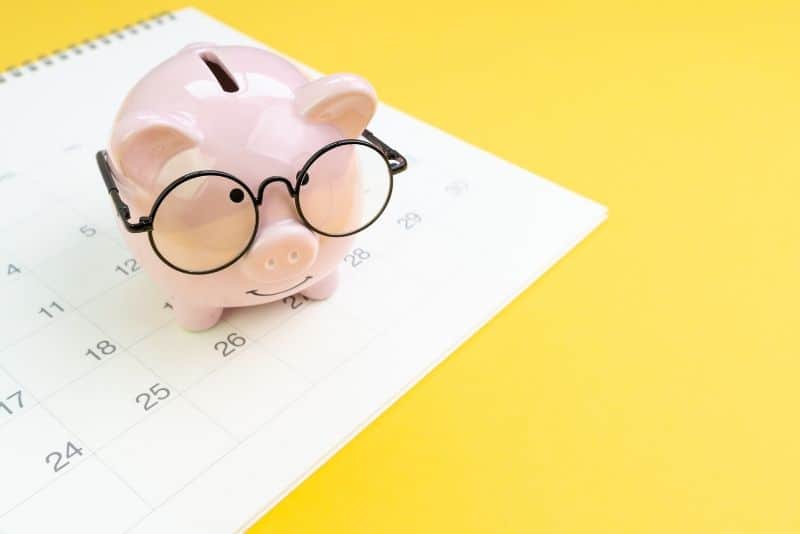Just as your regular calendar helps you organize and manage your schedule, a budget calendar helps you organize and manage your financial life.
Your financial state can get really good if you have a good budget as the backbone. However, a bill calendar points the way to a successful budget.
There are major expenses you always remember when you think about your budget, but you might leave out the travel dates, school functions, appointments, birthdays, sporting events, bill due dates, and other events where you would have to spend.
A realistic budget will have all these expenses fixed, so you are not taken unawares because you are expecting them to come up at that particular date.
To create such a realistic budget, you need a budget calendar (scroll down for our free PDF template). It is quite different from a regular budget in that it has a single purpose, which is to help you track your finances.
There’s provision for you to log in your income, savings amounts, rent or mortgage payments, and due date for each bill, so you always see what payments you have to make when you need to make them, and how much money you have available to cover it all.
You get to plan in advance for events or bills that can be easily forgotten until they are due.
So technically, a budget calendar helps you keep track of every important date from the point the money arrives to when you have to spend it.
You’ll be able to calculate how money flows in and out in a month.
Why You Need A Budget Calendar
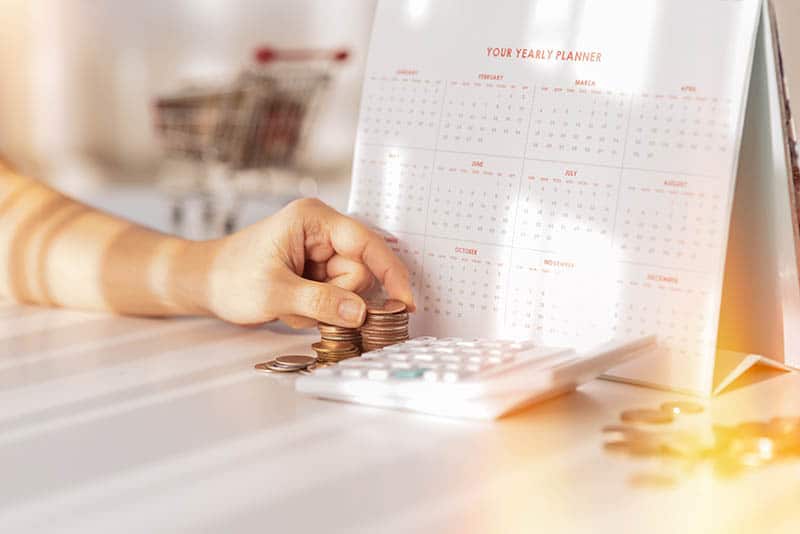
1. Less missed bills
With a perfect bill tracking system, the chances of forgetting the due dates of important bills will be very low or zero.
With a glance at the calendar, you can see when bills are due and when you have to make significant payments. You can also set reminders so that you don’t forget.
This way, you can avoid the late payment interests and also build a strong credit report.

2. Understand your cash flow
You get to have a better understanding of how your money moves around by tracking every bill, fixed expense, and income.
You’ll get to set a budget plan in accordance with your income, tracking your expenses against it to know what to strike out or where to direct your financial efforts.

3. Check impulse purchases
Since you already have all expenses logged in the calendar, as well as how much you have to take care of them, the result of every impulse purchase will be clear to you.
This means that if you take on any extra costs not captured in the budget, you might have fewer funds available to cover significant expenses.

4. Encourage cash payment
The budget calendar encourages payment of major expenses in cash.
Expenses are planned in advance, and so you can make more cash purchases instead of using your credit card.

5. Encourage saving
An idea of the expenses you’ll have to make in later months gets you into the habit of saving so as to be well prepared for them when they come up.
It will allow you to cut down on other non-essential costs or make adjustments where necessary early enough to accommodate for these instances.
It will help you create good financial habits, such as trying money saving challenges.
RELATED:
- 20 Different Money Saving Challenges Stay-At-Home Moms Can Try
- The No Spend Challenge Guide: 7 Best Ways To Save Money

How To Create A Budget Calendar
- The first thing to do is to make a list of all your expenses for the month and arrange them according to their due date. Your budget calendar will have recurring expenses like groceries
- credit card bills
- cell phone bills
- rent/mortgage and property taxes
- cable bills
- electricity and water bills
- subscription charges
- car payments
- health insurance
- bank fees
- personal loans
- gas
- insurance (e.g. vehicle, house, life)
- savings schedule (e.g. transfers to a savings account)
Irregular expenses to include in your list:
- car maintenance
- haircuts
- pest control
- HOAs
- HVAC inspections
- birthday and holiday gifts
- medical and vet bills
- back-to-school shopping
Take note of standard bills of the same amount that you have to pay on the same date every month, like your phone bill, health insurance, or housing.
Also, note bills of varying amounts due on the same date, such as your credit cards and utilities.
Additionally, be mindful of bills of varying amounts due on varying dates like gasoline and groceries.
For such varying bills, always overestimate.
For instance, you can write down $150 for your utility bills that run about $144.
Some bills come annually, biannually, or quarterly. Keep record of infrequent bills like website subscriptions, gym memberships, quarterly insurance, vehicle registration, and homeowner’s insurance.
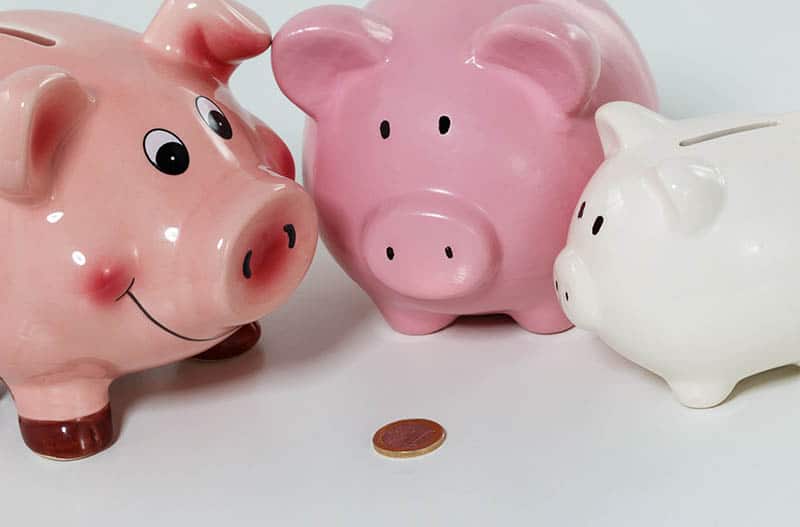
Note specific savings like sinking funds for debt settlement, as well as for holidays, car expenses, birthdays, emergency funds, 401k, etc.
Also, note paydays and income figures.
After making your list, go through your bank statement and credit card statement for the last three to six months to see if you are missing anything.
Also, consider the little infrequent expenses you make that add up over time. Try to have a list of everything at the beginning; however, if you forget to add anything, you can fix it later.
The next thing to do is to decide the style of the calendar you want to use.
You may want to use a desk calendar, wall calendar, laptop calendar, or phone calendar.
Get what you need for a wall or desk calendar, or get an app or program you like if you’re planning on tracking your expenses digitally.
You might also want to do both digital and hard copy.
If you’re going for a hard copy calendar, you need a calendar template, a good quality paper that won’t bleed through if you use a highlighter or marker on it, and a hole puncher or binder, if you wish.
You can get our free monthly budget template here. Print it out 12 times and you’re set for the whole year!

After getting your calendar ready, enter every income or expense on the corresponding date with simple and brief descriptions like “pay online,” “rent,” “automatic transfer,” etc.
You may also decide to color code the different categories of transactions or goal reminders, or add stickers to your calendar.
If you are using a digital calendar, you can also sync it to notify you when any payment is due. Check off bills after paying them.
At the end of every month, go through the calendar to make adjustments and changes where necessary. Make the next month’s plan afterward.
You can also make your budget calendar a few months ahead.
This way, you can save money for any future expenses.
However, it’s really up to you how to put together your budget calendar: weekly, monthly, or even yearly.
Most people prefer the monthly calendar since you can effect changes or make little adjustments along the line.
That said, a year-long budget calendar is quite motivational, especially if there’s a savings goal you intend to reach.

How To Make It Work
It’s one thing to make a budget calendar, and quite another to ensure that it works.
To succeed with this financial tool, certain things must be in place.
If you don’t have a budget, you need to draw one up first.
A budget is a summary of the total expected income and expenditure over a particular period, usually one month.
It is often seen as a tool for restricting spending; however, a realistic budget ensures that one spends efficiently. It is a tool for reaching financial goals.
A budget calendar is a road map to a successful budget.
To set up your budget, find out how much your total monthly income is in order to have a clear picture of how much you can spend.
Then calculate everything you expect to spend on within the month, your debts, savings, plus the annual or quarterly expenses you need to set aside money for.
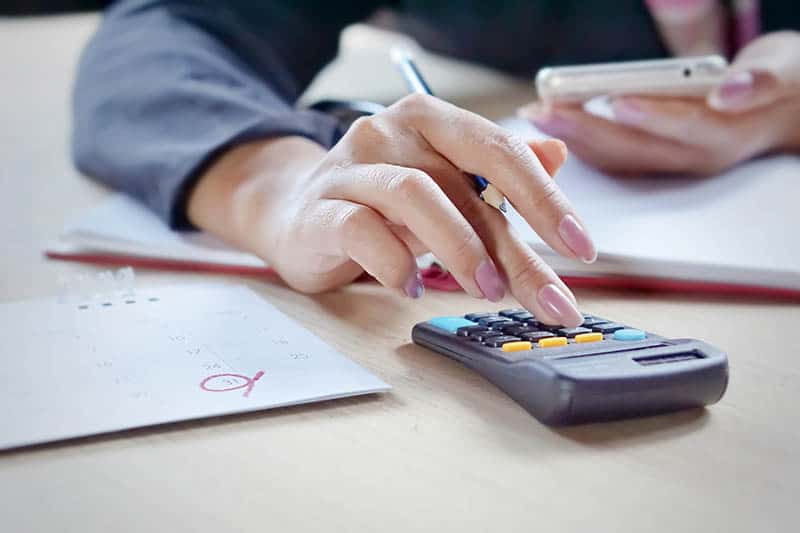
Find out what your income can carry while prioritizing major expenses.
Also, your expenses should be scheduled to come after your paydays so you can manage them properly and avoid late fees for bills.
You can ask your creditors to change your due dates to suit your income schedule. Some creditors will do that for you, so be sure to ask.
This will make it easier for you to get your monthly budget working.
You don’t have to depend solely on your calendar-keeping and budgeting skills.
Along with your paper calendar, if you choose, you can also set up a digital calendar to help you keep track of your finances.
You’ll get to receive transaction alerts and get notified when a bill due date is approaching, as well as see your projected account balance.
Digital Calendar Apps To Help Your Finances

If you are going to use a digital calendar to track your spending, you might want to consider these options. There are a number of calendar-based personal finance apps to help you keep track of your cash.
1. The Money Calendar
The Money Calendar is a desktop-based app that allows you to project your overall savings and account balance easily.
It’s best for managing personal finances, but can also serve for simple business expenses and income.
You can split your expenses into several categories, and you can watch your spending with the various auto-generated tools provided by the app.
The Money Calendar makes it a little easier to manage and maintain multiple accounts.
You can transfer money between multiple accounts with its multi-currency support feature.
It also has a clean layout, which will make it easier for you to keep tabs on your monthly expenses and budget.

2. CalendarBudget
CalendarBudget allows you to do so much for your finances. It is a simple personal finance app that works best for desktops.
It is easy to track and plan your finances with the app; It isn’t complicated and doesn’t need much time to get used to it.
There is a calendar that works like a financial planner with which you can track your money. Your budget is categorized, so all the financial moves you make can be noted easily.
You can also set an expense either as just a one time expense or to repeat, so you won’t have to worry about not remembering to set it up again.
The app also displays your daily expenses and sends email reminders to ensure you don’t forget a bill before it’s due.

3. Virtual Wallet
To use PNC’s Virtual Wallet, you need to have an actual bank account with PNC. If you are also looking for good checking account options, you can also consider PNC.
There are several financial budgeting tools available on Virtual Wallet plus a money bar that allows you to access the different categories such as your savings, spending, and long-term savings, to know how much money you’ve got in there.
It has a calendar too, which displays upcoming transactions as well as a projected account balance. It also alerts you when you are likely to fall into overdraft.
These budgeting tools are great, especially if you are looking for easy ways to budget over your checking account.

4. Moneydance
Moneydance is a budgeting software and personal finance tool with which you can track and organize all your finance info.
There’s provision for your checking account, savings account, investments and retirement accounts, and loan accounts like your credit cards all on the Moneydance platform.
It gives you access to all your bank accounts and also provides online banking, plus you can make payments from the platform.
With the software, you can download your transactions automatically for multiple accounts, and then the software will categorize them as income or expenses.
Moneydance’s summary tells you everything that is happening in all your accounts.
It also represents your financial situation with graphs and charts to give you a visual picture.

It also has other great features such as payment reminders, which ensures you don’t miss a payment by reminding you when each bill is due.
There’s also an account register that you can edit when you want to, investment tracking, and provisions for foreign currency transactions.
The foreign currency transaction feature sets the software apart from others because this feature can come in handy if you have an account that is foreign-based or are into some foreign transactions.
5. Quicken Mobile App

This is one of the most popular finance software available, providing all your basic budgeting needs.
It also provides a chance for you to make plans towards reducing your debts or increasing your investments and savings.
You can import transactions from all your financial accounts after you have synced them into the software, then the software will place them into specified expense accounts.
The software allows you to make budgets that are realistic based on your transaction history. It also foretells future balances.
6. Google Calendar
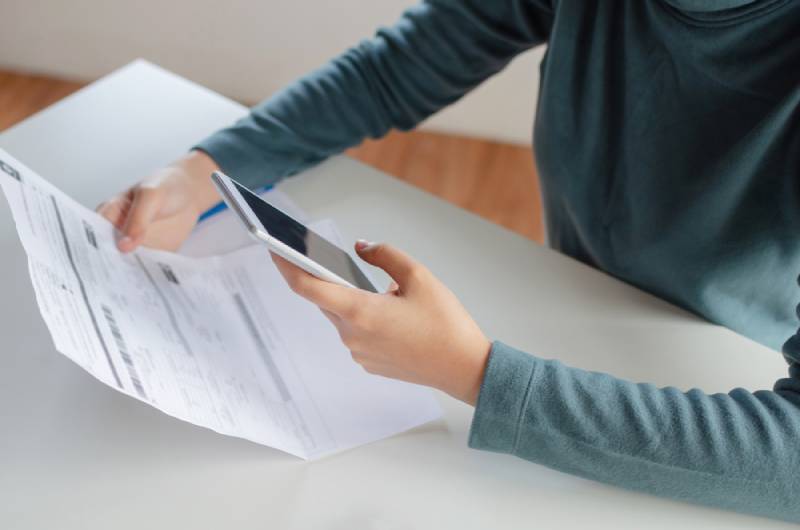
There’s a way to make your own close substitute of a calendar-based finance tracking app if you do not find any of the above five options appealing.
Google Calendar: It’s a simple way to keep track of your finances but without the account balance projections and reminders.
You simply color code the calendar with scheduled outgoing transactions, due bill dates, and incoming transactions.
You can use any of these digital calendars to track your money along with a hard copy calendar if you wish.
Whatever works for you is fine. The goal is to get you financially organized.
Additional Tips To Help You Stay On Track

- Shop with a list: Before you go shopping, it’s important to make a list of all the items you need. You’re bound to see several other items you may want at the store; however, remember that you are on a budget. Avoid blowing it on impulse purchases.
- Save whatever is left: Remember the balance from the bills you overestimated or the money for groceries you didn’t use up? You can pour back 90% of what’s left into your savings account for your rainy-day funds. 10% can go to your fun money to encourage you to save more.
- Avoid competition: It may look like your neighbors or friends go on expensive vacations or own the latest technologies, and you might want to do the same. Such competition will only lead to more debt, so stick to what your budget can afford.
Wrap Up
Creating a budget calendar to help you track your spending is a great idea, especially if you are still working on getting a grip on your budget.
However, maintaining it is as vital as creating one. With this financial tool, you have a good chance of saving money and also preparing for expenses ahead of time.
Like this post? Please share or pin it for later. You can also stay in the loop and follow us on Facebook, Instagram or Pinterest.
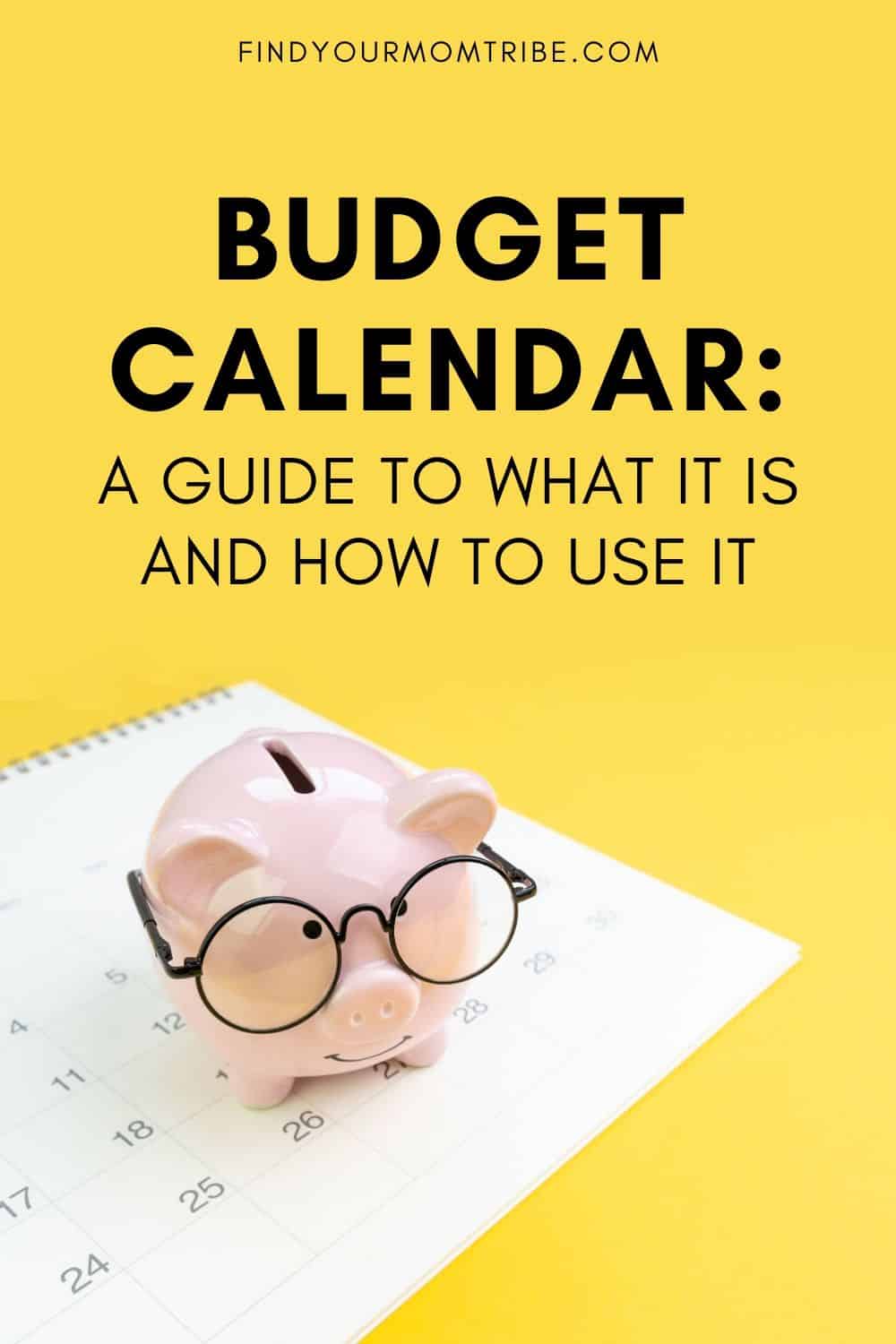
This post contains affiliate links. Please see our full disclosure for more info.

